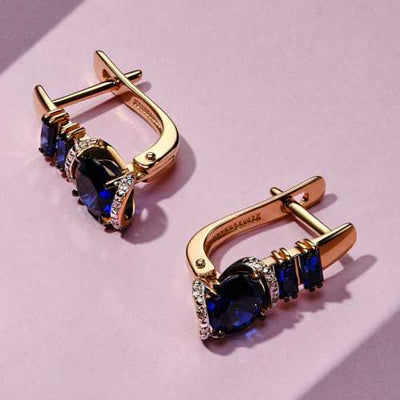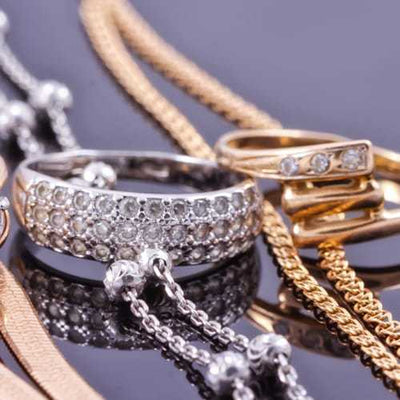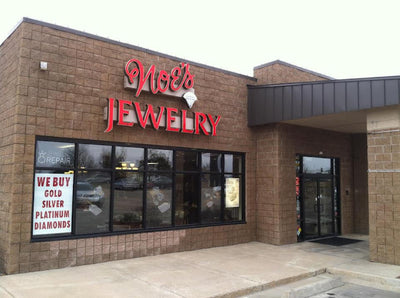 The second article in our four-part series about the 4 C’s of diamonds is focused on the term “cut.” The cut of a diamond has everything to do with the appearance of the diamond. In our opinion, the cut is the single most important factor to consider when purchasing a diamond. While many people believe that the cut only explains the shape of the diamond, it actually has a lot more meaning. Surprisingly, cut is the most complex and difficult to analyze of all of the 4 C’s. Noe’s Jewelry is here to help explain diamond cuts.
The second article in our four-part series about the 4 C’s of diamonds is focused on the term “cut.” The cut of a diamond has everything to do with the appearance of the diamond. In our opinion, the cut is the single most important factor to consider when purchasing a diamond. While many people believe that the cut only explains the shape of the diamond, it actually has a lot more meaning. Surprisingly, cut is the most complex and difficult to analyze of all of the 4 C’s. Noe’s Jewelry is here to help explain diamond cuts.
Read part one of our series: carat weight
What Does Cut Mean?
Even though many people believe that the cut is the term used to describe the shape of the diamond, it is a bit more complicated than that. The cut of the diamond is what influences the amount of sparkle you will see coming off of the stone. The grade of the cut tells consumers how well a diamond’s facets interact with light. To get a good cut grade, diamonds need to have ideal proportions, symmetry, and polish. Cuts are graded on a scale:
- Excellent/ideal cut diamonds are rare and make up only the top 3 percent of the diamonds that are on the market. These diamonds will reflect the most light.
- Very good cut diamonds represent the top 15 percent of diamond cut quality. These diamonds reflect nearly as much light as the ideal cut, but not quite as much. Prices tend to be lower for this cut grade.
- Good cut diamonds represent the top 25 percent of diamond cut quality. These diamonds reflect most of the light that enters the stone, but not as much as higher graded diamonds.
- Poor/fair cut diamonds represent only the top 35 percent of diamond cut quality. These diamonds usually appear dull or glassy.
Determining Cut Grade
To properly determine the cut grade, experts evaluate how well a diamond interacts with light. They are looking for visual effects such as:
- Brightness: White light reflected both internally and externally from a diamond
- Fire: The scattering of the white light into all of the colors of the rainbow
- Scintillation: The amount of sparkle produced by a diamond and the pattern of light and dark areas caused by reflections within the stone
A rough diamond doesn’t have any shine. For this reason, the proportions and symmetry of the stone will directly influence the above three effects. Other factors that come into play include the diamond’s weight relative to its diameter, its girdle thickness, the facet symmetry, and quality of polish on the facets.
Diamond shape is important, but only because the shape of the stone determines the cutting technique used to create the desired shape.
Ideal Diamond Proportions
For a round, well-cut diamond proportions should look like this:
- Table Percentage: 53-58%
- Depth Percentage: 59-62%
- Crown Angle: 34-35.5 degrees
- Pavilion Angle: 40.6-41 degrees
- Pavilion Depth: 42.5-43.5%
- Girdle Thickness: Thin-Slightly Thick
- Culet: None
- Symmetry: Very Good-Excellent
- Polish: Very Good-Excellent
For a little more explanation, here is a breakdown of the parts of the diamond:

- Crown: Top part of the diamond
- Table: The flat surface on top of the diamond that is a percentage of the entire width of the stone
- Pavilion: Bottom part of the diamond
- Depth: Height of the diamond from top to bottom that is measured by the height compared to the total width of the stone
- Pavilion depth: Height of the pavilion compared to the total width of the stone
- Culet: The bottom tip of the diamond that should be a perfect point
- Girdle: Edge that divides the crown and pavilion
- Symmetry: Everything should be centered, and all facets should be the same and in line
- Polish: The smoothness and shine of the finished surface
Diamond Shapes
The shape of the diamond isn’t the same as its cut, but it does directly influence the sparkle and beauty of the stone, which is where a lot of the confusion comes from. The rest of the confusion stems from the fact that shapes are often referred to as cuts. Some of the most popular diamond shapes include:
-
Round: Round brilliant diamonds are the most classic and popular shape of diamond. Round diamonds are known for their brilliance and beauty.
- PROS: The intense sparkle coming from these diamonds can hide flaws and color.
- CONS: Round diamonds tend to be the most expensive.
-
Princess: Princess cut diamonds are square and look good in almost all settings. These diamonds have an intense sparkle that isn’t only limited to the center of the stone. Instead, princess cut diamonds show distinct color in the corners, too!
- PROS: Princess cut diamonds can hide a lot of flaws, and they look great in any setting in any size.
- CONS: The sharp corners are notorious for chipping, and these diamonds aren’t ideal for anyone who is rough on their hands.
-
Cushion: Cushion cut diamonds, also called “pillow cut,” feature softly rounded edges and larger facets that provide a romantic look. Cushion cut diamonds tend to look good in all settings, but they are less brilliant than other cuts.
- PROS: The cut is a very unique shape that is sure to please people who like square but are drawn to soft round corners.
- CONS: Cushion cuts tend to look a little smaller than other cuts because they hold more of their weight in the underside of the stone, due to their cut.
-
Oval: Oval cut diamonds are unique and stand out in jewelry. Oval diamonds tend to look larger than round diamonds while making the finger look long and slender. Since they are cut in the same pattern as round diamonds, oval diamonds are similar in brilliance.
- PROS: Similar in brilliance and fire to a round diamond, but they look larger and cost less.
- CONS: Most oval diamonds have a slight “bow-tie effect.” This means that there is a dark area in the center of the stone caused by uneven light distribution.
-
Marquise: Marquise cut diamonds take the shape of a football, and they appear to be the largest of all cuts when compared to other shapes of the same carat weight. The shape is flattering for women with short fingers.
- PROS: The elongated shape is flattering and looks larger than other shaped diamonds of the same carat weight. Marquise cut diamonds have the largest surface area of any diamond shape.
- CONS: The bow-tie effect is common with marquise diamonds, and the pointed tips tend to trap more color.
-
Pear: Pear-shaped diamonds, also called teardrop diamonds, are a cross between round and marquise diamonds. The unique shape takes well to halo settings and is usually worn with the pointy end toward the fingernail.
- PROS: The cut makes the finger look long and slender.
- CONS: Pear-shaped diamonds are known for chipping at the pointed end of the stone.
-
Emerald: Emerald cut diamonds are known for their vintage feel. Emerald cut diamonds aren’t known for their sparkle like multi-faceted cuts tend to be. Instead, people love emerald cut diamonds for their luster and clarity. However, inclusions and color imperfections are much more apparent in emerald cut diamonds.
- PROS: This cut is one of the cheapest diamond shape options, and you can spend more money on higher color and clarity grades.
- CONS: Imperfections are nearly impossible to hide with an emerald cut due to the depth and translucency of the stone.
-
Asscher: Asscher cut diamonds are the more modern equivalent to the emerald cut. These diamonds are squarer in shape and provide more sparkle than an emerald cut. Think of these diamonds as a vintage feel with modern flair.
- PROS: Asscher diamonds are similar to emerald cut diamonds, but they have higher crowns, smaller tables, and larger step facets to produce a more brilliant appearance.
- CONS: This cut tends to be the priciest of the fancy-shaped diamonds, and it has the smallest surface area of any of the diamond shapes.
-
Radiant:Radiant cut diamonds combine the best cuts to give customers a diamond with a fierce sparkle. The radiant cut is very similar to the princess cut, but with cropped corners, which makes it an ideal choice for girls who are active but prefer the square or rectangular shaped diamonds.
- PROS: Radiant cut diamonds are very sparkly and come in both square and rectangular shapes without the sharp corners.
- CONS: These diamonds are more expensive than the princess cut due to the amount of rough material lost during the cutting process.
-
Heart: Heart shaped diamonds work best in a solitaire. The romantic shape isn’t for everyone, but it sure does appeal to a lot of women.
- PROS: This unique shape is romantic and pretty.
- CONS: Heart shaped diamonds are challenging to get right. You want to make sure that the shape of the heart is clearly outlined with symmetrical wings. You don’t want the wings to be too flat or too rounded or too fat or thin. The best-looking heart shape will have a ratio of 0.9:1 or 1:1.
Diamond shapes are also put into classes by cut technique, meaning the way that the diamond is cut to form the facet patterns in the stone. Here are some of the cut techniques:
- Brilliant cut: Brilliant cuts are designed to maximize the light returned through the top of the diamond. Brilliant cuts are often found on round diamonds. The modern brilliant cut contains 57 facets.
- Modified brilliant cut: A modified brilliant cut is the technique used to cut the same pattern as the brilliant cut in other shapes of diamonds. Diamond shapes cut using this technique include oval, pear, marquise, and heart. They are often nearly as brilliant as a round brilliant cut diamond.
- Step cut: Emerald and asscher cut diamonds are created using the step cut. This technique uses “steps” running down the sides and top of the diamond. The top of the diamond is like a large open window that lets you look into a hall of mirrors. This technique doesn’t yield the sparkle of brilliant cut diamonds, but it shows off the beauty of the diamond instead.
- Mixed cut: The mixed cut technique includes a mix of the brilliant and step cuts. The crown of the diamond is cut in the brilliant pattern, while the pavilion (or bottom) of the stone is cut in a step pattern. This technique gives the diamond its signature sparkle while keeping the weight of the stone higher. Stones in this class are the cushion, princess, and radiant cuts.
- Rose cut: Rose cut diamonds are not known for their brilliance. This is due to the fact that the stone has a flat bottom and a domed top. When facing up, the diamond looks like a rosebud. This cutting technique was used before modern cutting techniques were developed.
Importance of a Proper Cut
We have already talked about the factors that make lead to diamond cut grades, but just how important is a proper cut?
Well, with an ideal cut diamond, light enters the stone from the top of the stones, bounces around inside the stone, and exits through the top of the stone. This process returns almost all of the light in a manner where you can see a brilliant shine. With a poorly cut diamond, the light will leak out of the diamond, which makes the stone look dull.
Unlike the natural qualities of the stone (color and clarity), cut grades are determined by the craftsmanship of the person who is cutting the stone. This also means that even the most perfect stone by other measures will not look good with a poor cut. So, you could have a colorless, flawless diamond that is ruined by the cut.
A well-cut diamond can also hide imperfections caused by the natural qualities of the stone such as a slight coloration and inclusions. For this reason, we recommend getting a diamond that is well-cut and worrying less about the color and clarity.
Many jewelers also understand that the better the cut, the larger the diamond appears. In fact, an ideal cut makes a diamond the correct size for its carat weight. Diamond cutters want to make the stones as large as possible from the rough diamond, because the larger the diamond, the higher the price. However, this means that a lot of diamonds are cut to reach a maximum size instead of maximum brilliance in diamonds. What this means for consumers is that many diamond cutters are creating stones with a deeper cut so that it is heavier, but in reality, it appears to be the same size as a diamond that is cut to the ideal shape to your eye because they have the same surface area. So, you are paying more for a larger diamond that doesn’t look any bigger or as brilliant as an ideal cut diamond.
If are in the Raymore, Missouri, area, the jewelers at Noe’s Jewelry would love to help you find the perfect diamond for your next piece of jewelry. Our experts can explain your options and help you pick a beautiful diamond for a ring, necklace, or any piece of jewelry you wish.
Part one of the 4 C’s series: carat weight
Part two of the 4 C’s series: diamond cut
Part three of the 4 C’s series: diamond color
Part four of the 4 C’s series: diamond clarity






